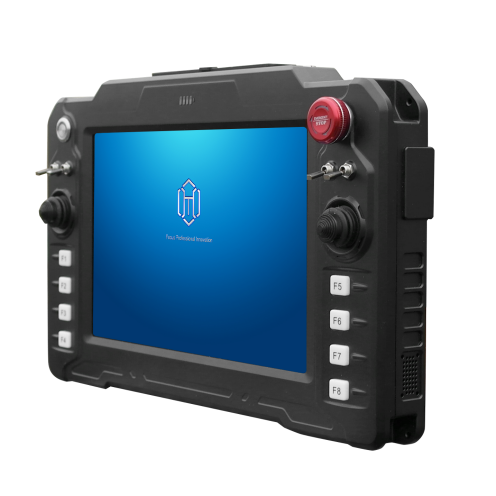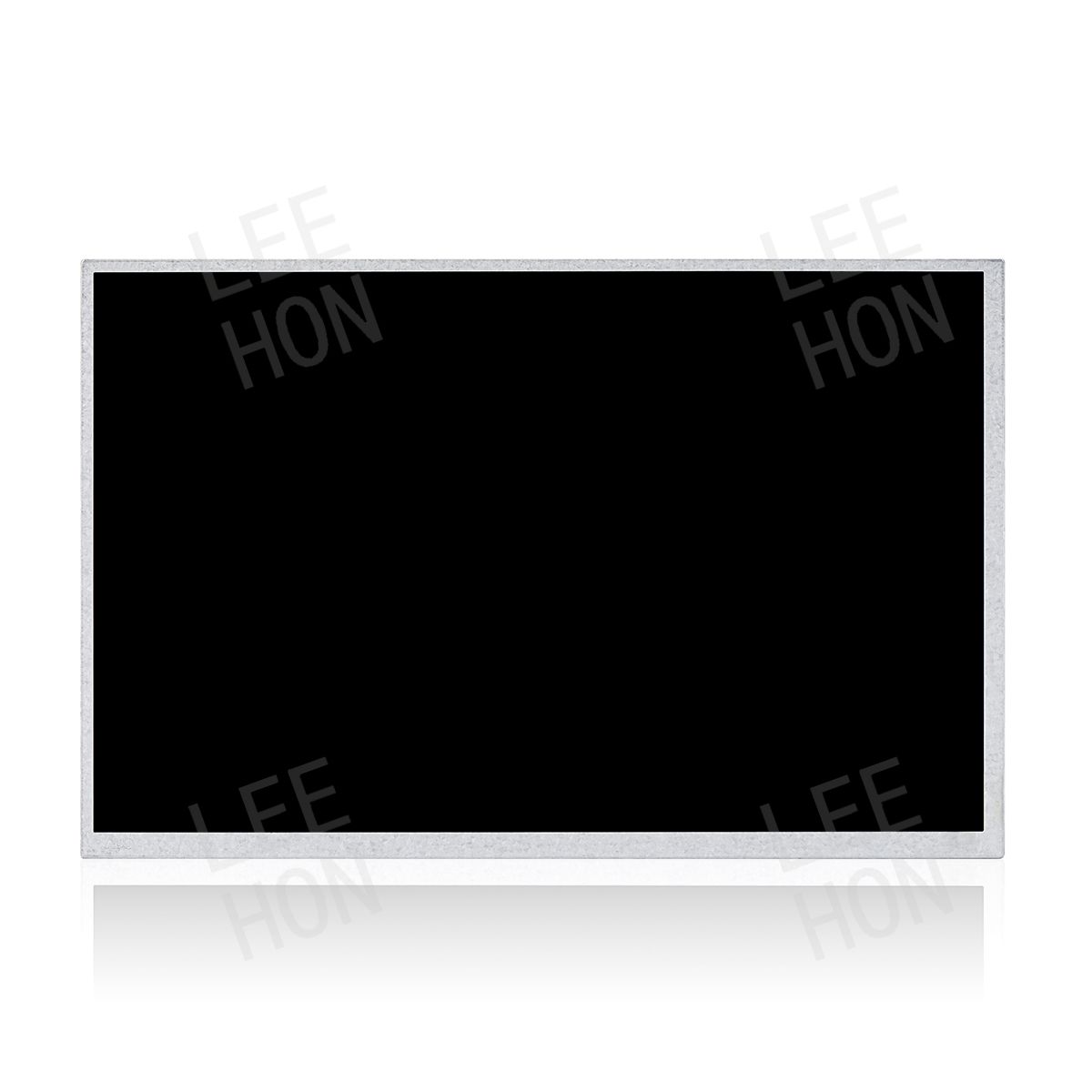Industrial LCD Screen Selection Guide for Handheld Terminals: Practical Advice for Reliable and Efficient Display Solutions
News 2025-03-13
In industrial environments, the LCD screen of a handheld terminal is not only the window for user-device interaction but also a critical component for device stability and durability. Choosing the right LCD screen can improve operational efficiency, reduce maintenance costs, and extend the device’s lifespan. Below, we break down how to select a suitable industrial LCD screen based on real-world application scenarios.
1. Environmental Adaptability: Weather Resistance and Protection Rating
Industrial environments are often challenging, with factors like high and low temperatures, humidity, dust, and vibrations. If the LCD screen can’t handle these “tough conditions,” it will quickly fail. Therefore, environmental adaptability is the top priority in selection.

- Protection Rating (IP Rating): Devices in industrial environments are frequently exposed to harsh conditions, such as outdoor operations or dusty factories. A screen with at least an IP65 rating is essential. It effectively prevents dust and moisture intrusion, ensuring stable operation in harsh environments. For more demanding conditions, such as high-pressure water cleaning, consider IP67 or even IP68-rated screens.
- Wide Temperature Range: Industrial devices often operate in environments with extreme temperature variations. For example, winters in the north can drop to -20°C, while summers in the south can soar to 50°C. Therefore, selecting a screen with a wide temperature range (e.g., -30°C to 80°C) is crucial. Such screens can function reliably in extreme temperatures without issues like image lag, ghosting, or blackouts.
2. Display Performance: Clarity and Visibility
In industrial scenarios, the display quality directly impacts operational efficiency and accuracy. If the screen is hard to read, operators might misinterpret information, leading to reduced productivity or even safety incidents.
- Resolution: Higher resolution means sharper display quality. For applications requiring complex data or graphics (e.g., warehouse management or equipment monitoring), opt for screens with 800×480 or higher resolution. For simpler text or icon displays, 480×272 resolution may suffice.
- Brightness and Contrast: In bright environments, insufficient screen brightness can make content “disappear” into the background light. Choose screens with brightness ≥500cd/m² to ensure visibility under sunlight. High contrast (e.g., 1000:1) enhances image depth, making details more prominent.
- Viewing Angle: Wide-viewing-angle screens (e.g., 170°) allow users to see content clearly from different angles. In collaborative scenarios, wide-viewing-angle screens reduce the need for frequent device adjustments, improving efficiency.
3. Durability and Impact Resistance
Handheld terminals in industrial environments are bound to experience bumps and drops, such as falling from heights or being hit by tools. If the LCD screen isn’t sturdy, it can easily get damaged.

- Material Choice: Screens made of tempered glass or reinforced plastic offer better impact resistance. For example, in logistics and warehousing, where devices may frequently fall, tempered glass screens can prevent cracking and extend device lifespan.
- Touch Technology: Resistive touchscreens are more suitable for industrial environments than capacitive ones. In oily or dusty environments, resistive touchscreens remain stable, while capacitive touchscreens may malfunction due to dirt or moisture.
4. Touch Experience: Responsiveness and Accuracy
The responsiveness and accuracy of the touchscreen directly affect user experience. If the touchscreen is slow or inaccurate, operators may make frequent errors, impacting efficiency.
- Touch Sensitivity: Choose screens with a touch response time ≤10ms to ensure smooth operation. In scenarios requiring fast input, a highly responsive touchscreen provides instant feedback, reducing delays.
- Multi-Touch: For applications requiring complex operations (e.g., zooming or rotating images), opt for multi-touch screens. In equipment debugging or data analysis, multi-touch functionality enhances convenience and efficiency.
5. Power Consumption and Energy Efficiency
Handheld terminals typically rely on battery power. If the LCD screen consumes too much power, the device’s battery life will be significantly shortened.
- Low-Power Technology: Choose screens with low-power backlighting (e.g., LED) and automatic brightness adjustment. In scenarios requiring prolonged use, low-power screens can significantly extend battery life, reducing charging frequency.
- Standby Power Consumption: Ensure the screen has extremely low power consumption in standby mode to conserve energy. For example, when the device is in sleep or standby mode, a low-power screen minimizes energy drain, extending overall battery life.
6. Interface and Compatibility
The LCD screen must seamlessly integrate with the handheld terminal’s hardware and software systems. Otherwise, compatibility issues may arise, increasing development costs.
- Interface Type: Choose screens with common interfaces (e.g., LVDS, MIPI, HDMI) to ensure compatibility with the main control board. For example, when upgrading or replacing screens, common interface types reduce adaptation difficulties and costs.
- Driver Support: Verify that the screen drivers are compatible with the operating system (e.g., Android, Windows Embedded) to avoid development issues. For example, in custom application development, compatible drivers simplify the development process and improve efficiency.
7. Cost and Supply Chain Stability
While meeting performance requirements, cost control and supply chain stability are also critical considerations.
- Cost-Effectiveness: Choose the best-performing screen within the budget to avoid over-specification. For example, when the budget is limited, a cost-effective screen can meet basic needs while controlling overall costs.
- Supplier Reliability: Select suppliers with stable supply chains and good after-sales service to ensure long-term supply and technical support. For example, over the device’s lifecycle, a reliable supplier can provide continuous support and spare parts, reducing maintenance and replacement difficulties.
Conclusion
When selecting an industrial LCD screen for handheld terminals, consider environmental adaptability, display performance, durability, touch experience, power consumption, compatibility, and cost. Here are some practical suggestions:
- In harsh environments, prioritize screens with high protection ratings and wide temperature ranges.
- In bright environments, choose screens with high brightness and contrast.
- In scenarios with frequent movement or high drop risks, opt for impact-resistant screens.
- In applications requiring fast or complex operations, select highly responsive and multi-touch screens.
- In battery-powered scenarios, choose low-power and low-standby-power screens.
- For device upgrades or custom application development, select screens with compatible interfaces and drivers.
- When the budget is limited, choose cost-effective screens with stable supply chains.
By following this scientific selection logic, you can equip your handheld terminal with a reliable and efficient LCD screen, enhancing overall device performance and user experience. We hope this guide provides valuable insights to help you excel in industrial applications!
